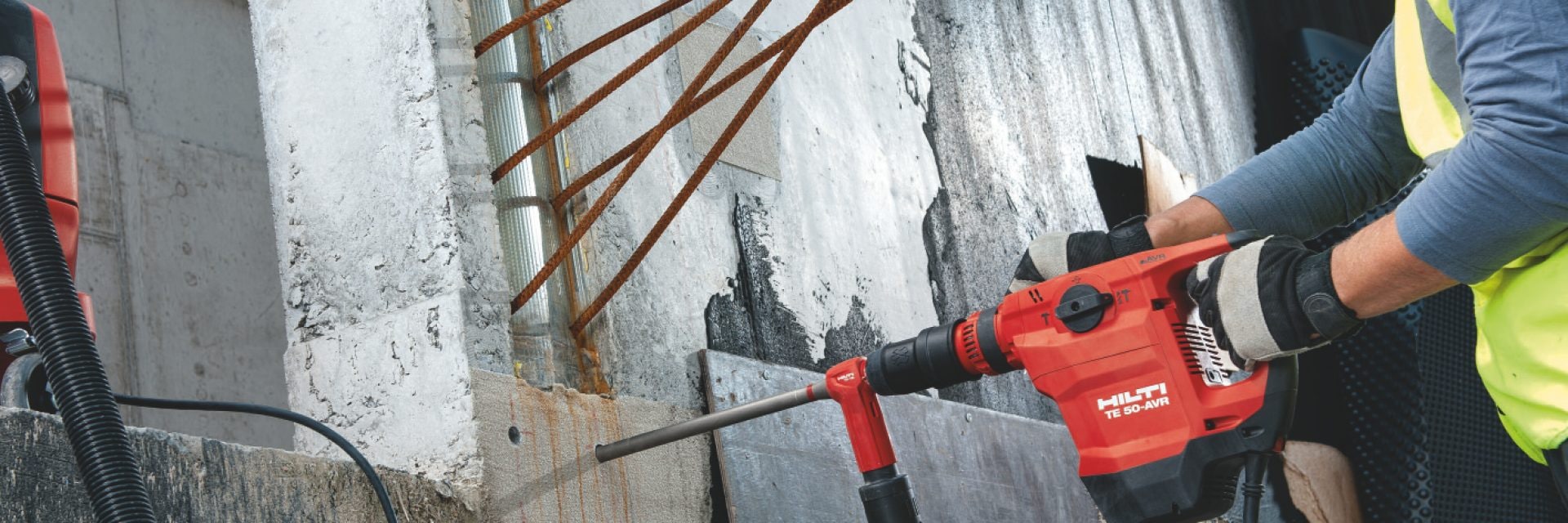2) Holding or working with machinery that vibrates
Using machinery that vibrates is often unavoidable in construction, especially tools such as concrete breakers, sanders, grinders and hammer drills. However, it’s important to put some measures in place to prevent extensive hand-arm vibration exposure.
For example, all workers should check their tools before using them to ensure they've been properly maintained and repaired, to avoid increased vibration caused by faults or general wear and tear.
Another option is to use tools with Active Vibration Reduction Technology (AVR) such as our TE 3000-AVR breaker. Hilti’s AVR Technology comprises of a series of springs and pivots that effectively decouples the side handles from the operational end of the tool. The vibration in the direction of the hammer is reduced by a damping mechanism, whilst counter balancing further reduces the vibrating effects.
The result is a machine which not only feels much lighter than its power suggests, but has a tri-axial vibration value that enables Hilti to claim a best-in-class trigger time that boosts operator productivity.

